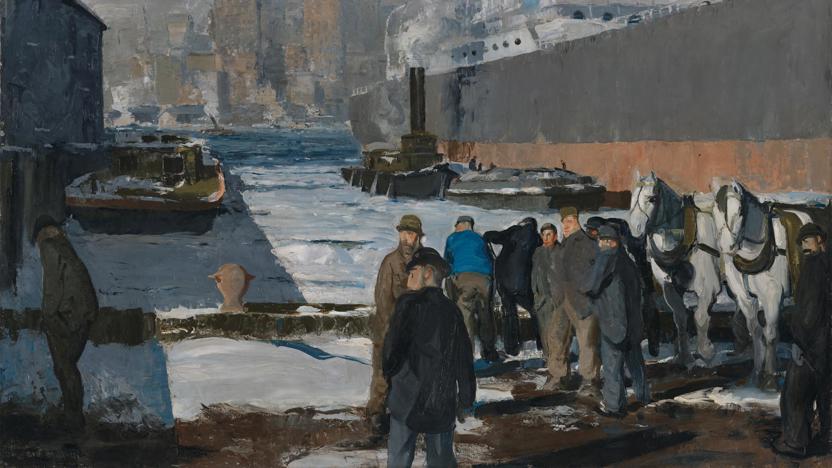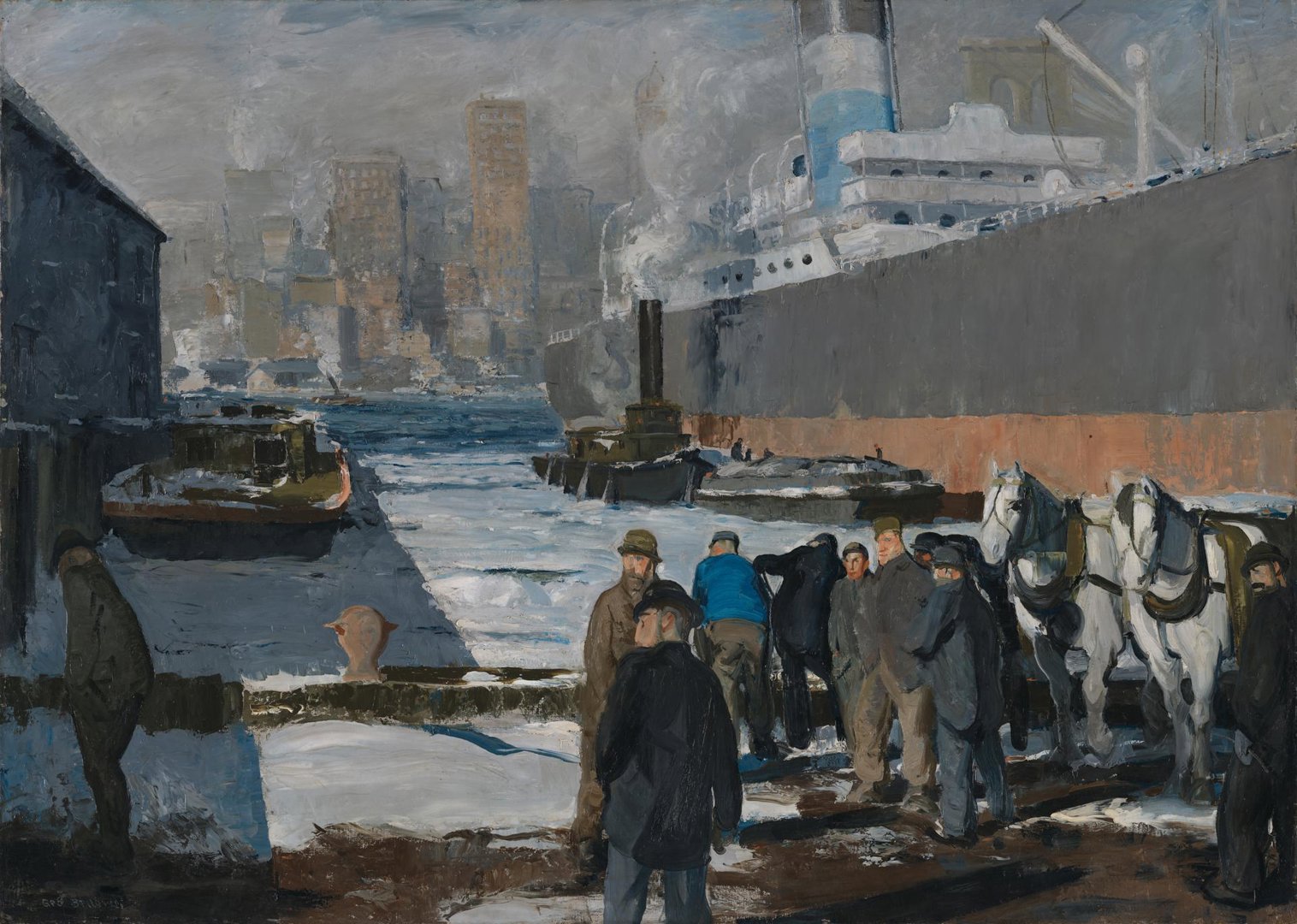George Bellows's 'Men of the Docks'
Audio description
This is a description of 'Men of the Docks', by George Bellows, a landscape painted in 1912. About 110cm by 160cm, this powerful painting is done in oils. It shows a view of New York from the waterfront, across the River to the skyline of Lower Manhattan, glittering in the sharp light of winter. Executed with rough but luscious brush strokes, Bellows almost carves his impression of the scene. He layers the paint thick and solid, so it glistens, as if still wet.
In the right foreground are nine men, standing around in thick, heavy overcoats, boots and soft brimmed hats in dark colours. Most of them are looking towards the left at something happening outside the painting. Two of them have their backs to us, leaning over railings at the edge of the water, one of them wearing a bright blue jumper which stands out against the almost monochrome scene.
These are longshoremen, waiting for the possibility of work hauling cargo on and off the huge steam ships, transporting, coffee, tea, and coal to the US and beyond. To the far right of the men are two large, white cart horses, in thick leather harnesses.
On the left is the wall of a large warehouse, extending away from us out over the river, the rest of the building cut off by the left edge of the painting. A tug boat is moored alongside, it’s stern towards us. The warehouse is a dark grey-blue, a brooding shape above the pale icy water. It contrasts with the monumental bright, white bulk of one side of a steamship on the right, which like the warehouse, is cut off by the painting’s edge. Two squat vessels are alongside - another tug boat, and behind that a boat with a funnel, spewing out dirty smoke from its tall black chimney.
In the left foreground, in the shadow of the warehouse, a solitary figure is turned away from the other men. His shoulders are hunched, head down.
On the far side of the river, hazy skyscrapers in soft tones of beige and grey, rise into a pale snow filled sky, at their foot the low shapes of rough slums. Towards the right, just visible through the smoke from the boat, is the high dome of the Singer Sewing Machine Building, one of the tallest architectural triumphs of New York. And to the right of that, the towers of the Brooklyn Bridge.
Bellows wants us to be in no doubt as to where we are, in the great glory of the fastest growing City in the world – New York. But more than that Bellows is showing us the stories of emigrant workers .
Ordinary people were the focus of the Ashcan painters of which Bellows was one, a political group of artists who were concerned to reveal the contrast between the haves and the have-nots. Bellows painted this from sketches he made on the Dock side, documenting the reality of the harsh existence of manual workers. We know he made this painting in January and February of 1912 and ensured it was exhibited in the March and April of that year, in the prestigious National Academy of Design. His interest in ships and shipping were fueled by the hysteria of the impending arrival of the Titanic, supposedly the most luxurious, decadent celebration of opulent life, due to dock in New York on the 15 April. It was a spectacle of luxury that contrasted powerfully with the grim and brutal existence of the workers, who were driving the burgeoning economy and the great capitalist American dream.


